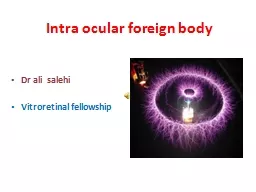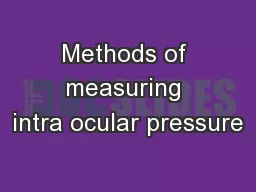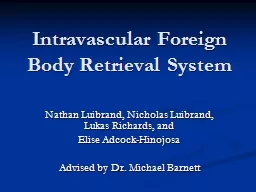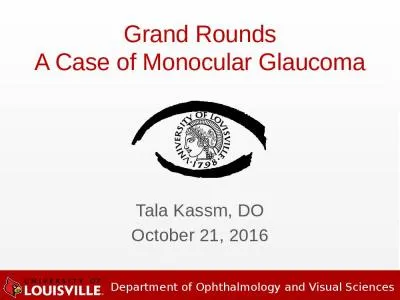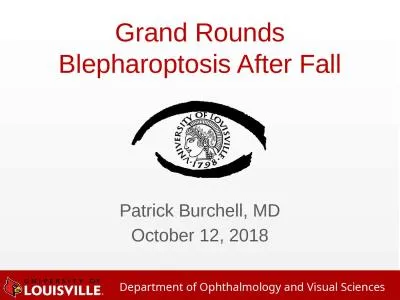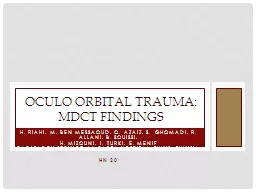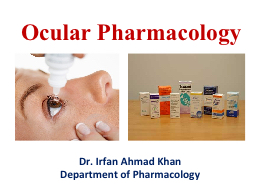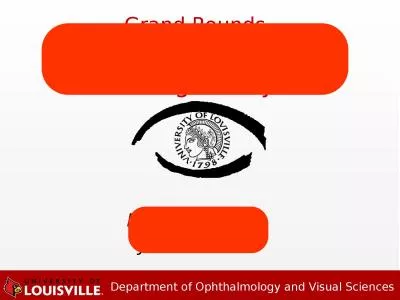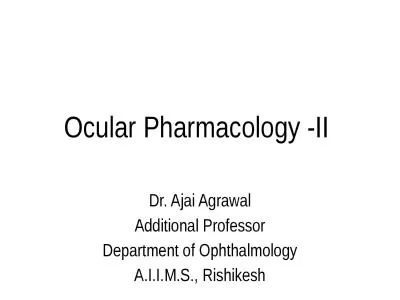PPT-Intra ocular foreign body
Author : garboardcola | Published Date : 2020-06-16
Dr ali salehi Vitroretinal fellowship Epidemiology According to the United States Eye Injury Registry USEIR the surveillance arm of the American Society of
Presentation Embed Code
Download Presentation
Download Presentation The PPT/PDF document "Intra ocular foreign body" is the property of its rightful owner. Permission is granted to download and print the materials on this website for personal, non-commercial use only, and to display it on your personal computer provided you do not modify the materials and that you retain all copyright notices contained in the materials. By downloading content from our website, you accept the terms of this agreement.
Intra ocular foreign body: Transcript
Dr ali salehi Vitroretinal fellowship Epidemiology According to the United States Eye Injury Registry USEIR the surveillance arm of the American Society of Ocular Trauma ASOT . Christian . Petrauskis. – 01/29/2015 . Scenario. An exasperated mother brings her 2 year old daughter to the ED 1 hour after she was found to be gagging and drooling while playing in dad’s coin jar. On exam she is afebrile with stable vital signs, well-appearing and in no acute distress. Plain radiograph confirms presence of circular radio-opaque structure that appears to be located in the esophagus. . The Basics. . Jack L Schaeffer OD FAAO. . Marc Bloomenstein OD FAAO. Paul Karpecki OD FAAO. . Ocular Surface Wellness . Ocular surface wellness means . re-envisioning our role as eye care practitioners (ECPs). What is intra ocular pressure ?. Definition. Intra ocular pressure refers to the pressure exerted by the intra ocular contents on the coats of the eyeball.. It is maintained by the equilibrium between the aqueous humour formation, its outflow and the episcleral venous pressure. Nathan Luibrand, Nicholas Luibrand, Lukas Richards, and . Elise Adcock-Hinojosa. Advised by Dr. Michael Barnett. Problem Statement. There is only one tool commonly used today, the En Snare.. Very limited maneuverability. . All questions/suggestions pls. address to riabtsev@yahoo.com. Overview. 33 angular predictions for both luma and chroma and two non-directional. predictions (DC, Planar).. PB sizes from 4×4 up to 64×64.. Grand Rounds. A Case of Monocular Glaucoma. Chief Complaint. “My eye pressure is high in my right eye and my vision is blurry.”. HPI. 53 year old WM. referred to glaucoma . clinic. by an outside optometrist with a 4 day history of blurry vision and associated eye pain OD. . Grand Rounds. Blepharoptosis. After Fall. CC. Right Upper Eyelid Ptosis. HPI. 4 . yo. female referred for evaluation of RUL ptosis s/p fall 11 months prior. Patient fell while running with unsharpened pencil in hand. Presented to local ED with a small upper eyelid laceration.. . BSc(Hons) . PGCert. PhD MCOptom FBCLA DipTp(IP). Objectives. By the end of this lecture you should be able to:. Understand the mechanism of ocular allergy. Diagnose the different forms of ocular allergy. H. MIZOUNI, I. TURKI, E. MENIF. Radiology service, La . Rabta. Hospital, Tunis, Tunisia. HN . 20. . OCULO ORBITAL TRAUMA:. MDCT FINDINGS. Introduction. Traumatic oculo orbital injury occurs frequently, whether isolated or associated with craniofacial lesion.. 649 Associated with Covid-19 Vaccination Copy Right@ Voichanski Shilo This work is licensed under Creative Commons Attribution 4.0 License AJBSR.MS.ID.002173. American Journal of Biomedical Science Irfan. Ahmad . Khan. Department of Pharmacology. Anatomy of Eye. Tear Film. Pharmacokinetics of Ocular Therapeutic Agents. Pharmacokinetics of Ocular Drugs. Classical pharmacokinetic theory based on systemically administered drugs . th. 2018. Grand Rounds. A . Unique Intra-Orbital Foreign Body. CC. Ophthalmology service was consulted to evaluate a patient for possible intra-ocular foreign body. HPI. 87 . yo. WF presented to the ER after she was partially run over by a truck twice, sustained multiple trauma including skull and facial trauma, and extensive scalp lacerations. Facial bones CT scan showed left intra-orbital foreign body and per radiology intra-ocular FB could not be ruled out. . FOREIGN BODY ASPIRATION. FOREIGN BODY ASPIRATION. Foreign body aspiration . is a . life-threatening emergency requiring immediate intervention.. The . removal of a foreign body in the respiratory tract generally leads to a rapid recovery . Dr.. . Ajai. . Agrawal. Additional Professor. Department of Ophthalmology. A.I.I.M.S., . Rishikesh. Learning Objectives. . At the end of this class students shall . have a basic understanding of :.
Download Document
Here is the link to download the presentation.
"Intra ocular foreign body"The content belongs to its owner. You may download and print it for personal use, without modification, and keep all copyright notices. By downloading, you agree to these terms.
Related Documents

